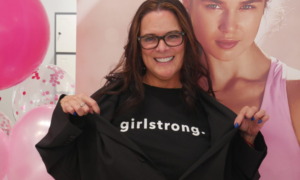More than 15 years ago, I began using a twist on an old saying as a way to get discussions started about the status of youth work and youth workers in the United States. We all understand the disrespect shown to teachers and students in the adage: “Those who can, do. Those who can’t, teach.” Needing to communicate my message quickly, I added a third phrase: “Those who can’t teach do youth work.”
That statement summed up public sentiments about those who work with young people in informal settings such as community organizations, summer recreation programs, diversion programs and second-chance employment training centers.
I stopped using that adage a while ago, as the conversations about youth workers and the youth development field moved from multipurpose rooms with folding chairs to hotel banquet rooms and foundation-sponsored retreat centers. In hopes of showing how far we’ve come, I used the phrase again in opening remarks to about 30 after-school and youth work veterans who attended a retreat last November, sponsored by the Johnson Foundation, to call for the development of a national youth work system.
Youth work is still less understood than the teaching profession, but it is finally being recognized as a vocation that calls for complementary skills, orientations and aptitudes. The basic demands of the jobs are different, due to intentional differences in the structure of the settings and the purpose of the work. For those working in socially and economically impoverished neighborhoods, the need for good teaching and good youth work is so great that it is difficult to do one well without doing a lot of the other.
So it was with great surprise that I read a recent Washington Post article (“A D.C. Teacher’s Day in the Rose Garden,” April 21) about this year’s National Teacher of the Year award going to someone who is best described as an outstanding teacher/youth worker.
Jason Kamras is a 31-year-old math teacher at John Philip Sousa Middle School in Washington, D.C. Sousa is a crumbling facility in the city’s poorest neighborhood, where 90 percent of the students are on free or reduced-price lunches, and virtually all are African-American. Teachers from this section of Washington rarely win local teacher-of-the-year awards, much less national ones.
Kamras stands out, according to the Post, because he made a priority of “bridging the inequities in staffing and other resources between urban and suburban schools.” He took his students on outings. He began advanced math classes before school started each morning to prepare students for standardized tests. He made time after school to encourage their hobbies. He encouraged them to take photographs of community life and got their prints displayed in city offices. He found time for one-on-one tutoring and activities with the kids – such as playing chess once a week with one boy, using the time to learn about his family and his goals.
Kamras explained his blended approach to teaching and youth work by noting his resolve not to let “negative factors shape my perspective,” which enabled him to “engage students and bring their natural love . . . for their hobbies into the classroom,” and to “use that as a catalyst” to reach them.
The lines between school and community need to blur if we are to help prepare young people for college, work and life. Their futures depend on having a chain of adults with linked arms, ready to help them with problems, remind them of their potential and connect them to pathways. They need teachers who do youth work, youth workers who teach, family members who are advocates, advocates who dine with their families, peers who have hope and hope for their peers.
Kamras was applauded for going above and beyond the norm to be a jack-of-all-trades teacher and youth worker, and for spearheading innovations in instructional practices that helped the whole school. But we will never have enough Kamrases to change the odds for underserved youth until we recognize that he is doing two jobs, and supplementing both with his own money.
We need more teacher/youth workers. We need youth worker/teachers. We need more adults who are paid, positioned and motivated to blur the lines so that teaching and learning – about academics, about work and about life – can flow freely.
Maybe next year we’ll have two awards – National Teacher of the Year and National Youth Worker of the Year. We’ll smile when we realize they are two sides of the same coin.































